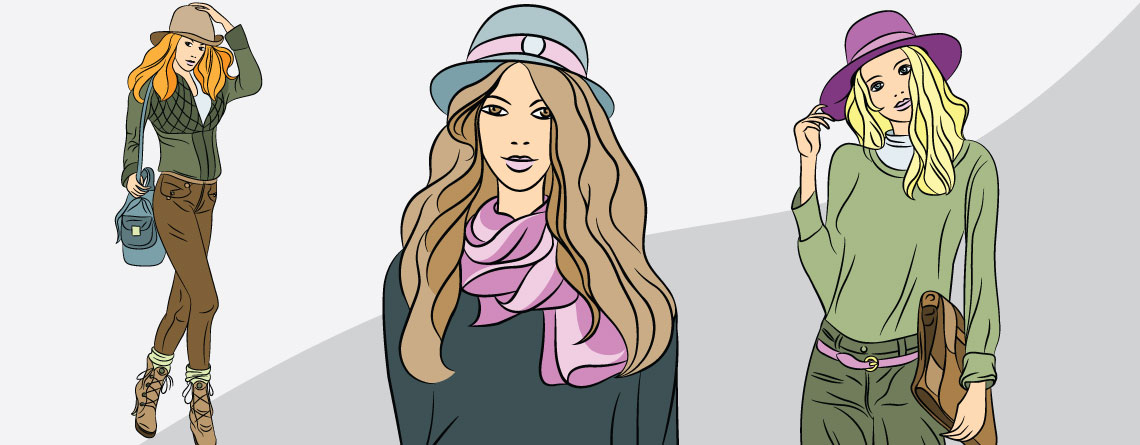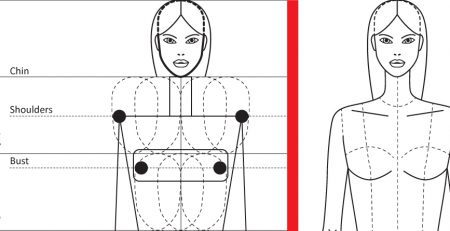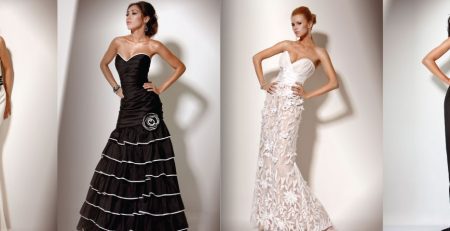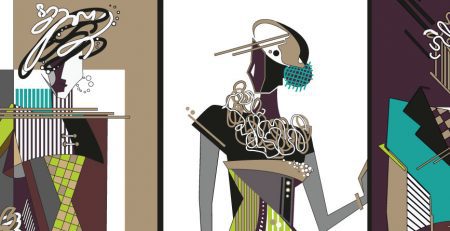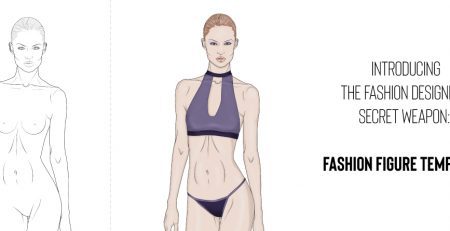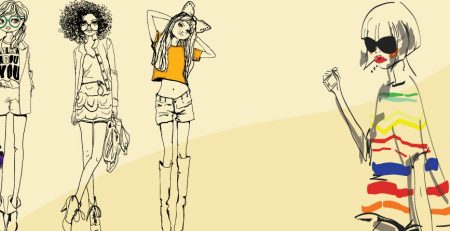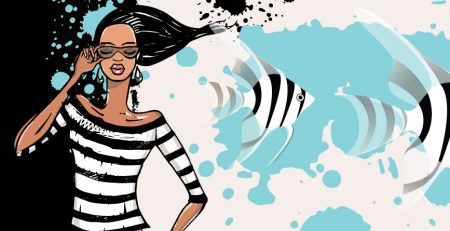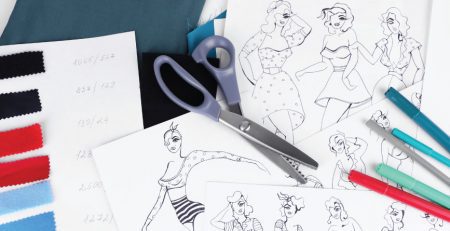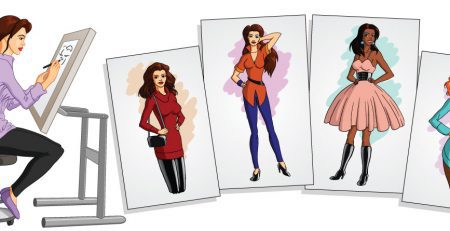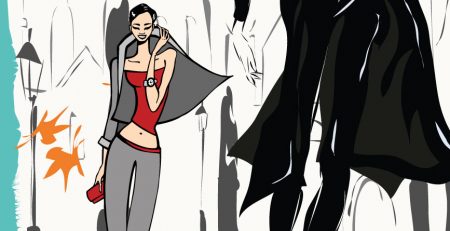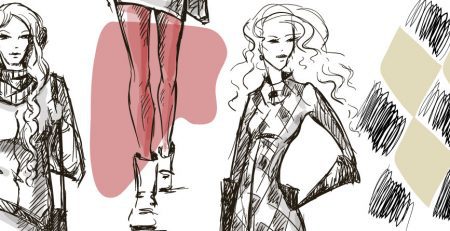Designers can create digital fashion sketches using computer art software. Adobe Photoshop and Adobe Illustrator are two mainstream programs that serve as excellent digital interpreters of the drawing skills a designer develops in the real world. All of the techniques described for fashion sketches created by hand can be recreated using the on-screen tools, layers, brushes, and filters. Many types of software designed specifically for the needs of a fashion designer are now available. Of course, none of these programs is a substitute for learning how to draw.
In the end, a computer and software are just tools like a brush and a pencil. Either discipline must be mastered to produce great images. The advantage of digital art is that it’s cleaner and paperless, and it allows the designer to update, correct, and reproduce visual information more easily and quickly.
Designing textiles with software that can communicate with looms and knitting machines is another practical use of technology. This type of program allows the designer to create woven and knit fabrics by coloring each warp and weft thread as well as every knit and purl stitch. Other programs allow the designer to scan in a swatch of a fabric that they may have discovered but that is no longer available. Designers can clean up the scan, then reduce a print to a motif that they can recreate, redesign, or recolor according to how it will best serve their idea.
Draping software makes it possible for designers to create textured surface grids for sketches or photographs of sample garments. They can then assign their digital fabric designs to these surfaces. A picture is worth a thousand words when attempting to describe how a garment will read when fabricated in different textiles. The whole process allows designers to reduce risk by extending a menu of possibilities to a buyer before committing to the production of fabrics and garments.

